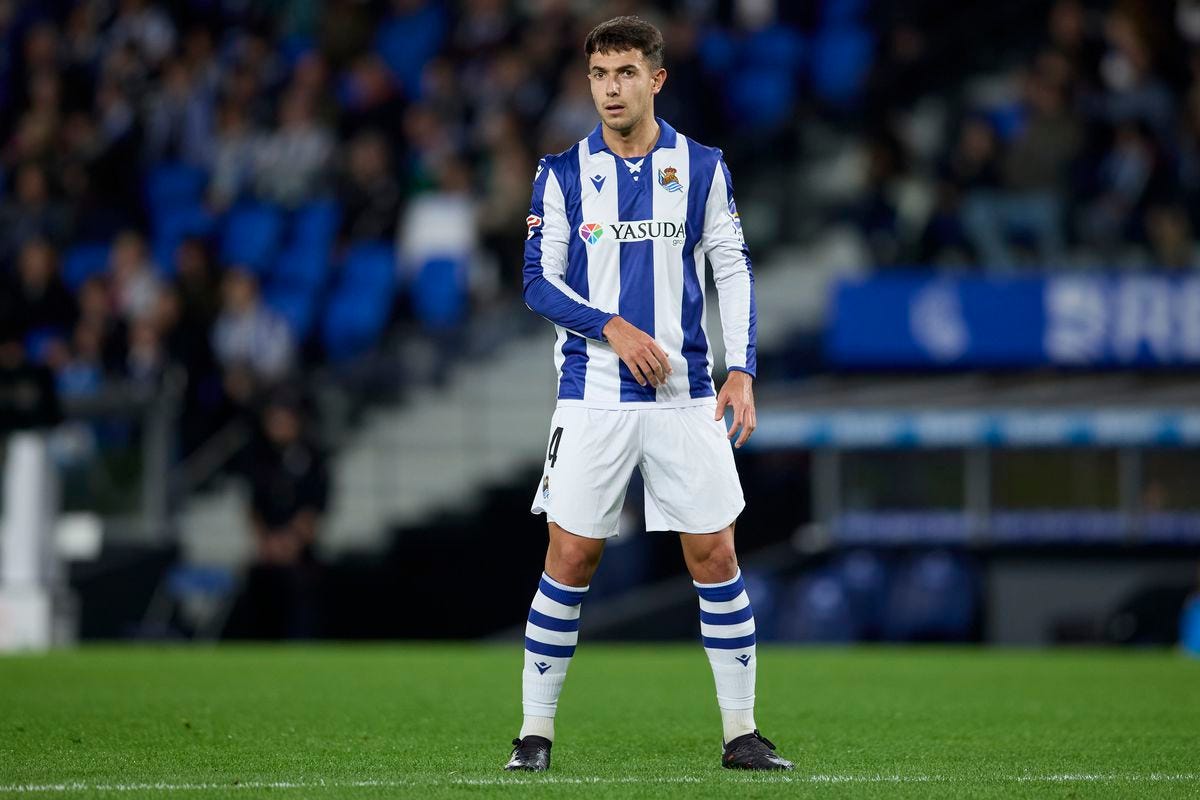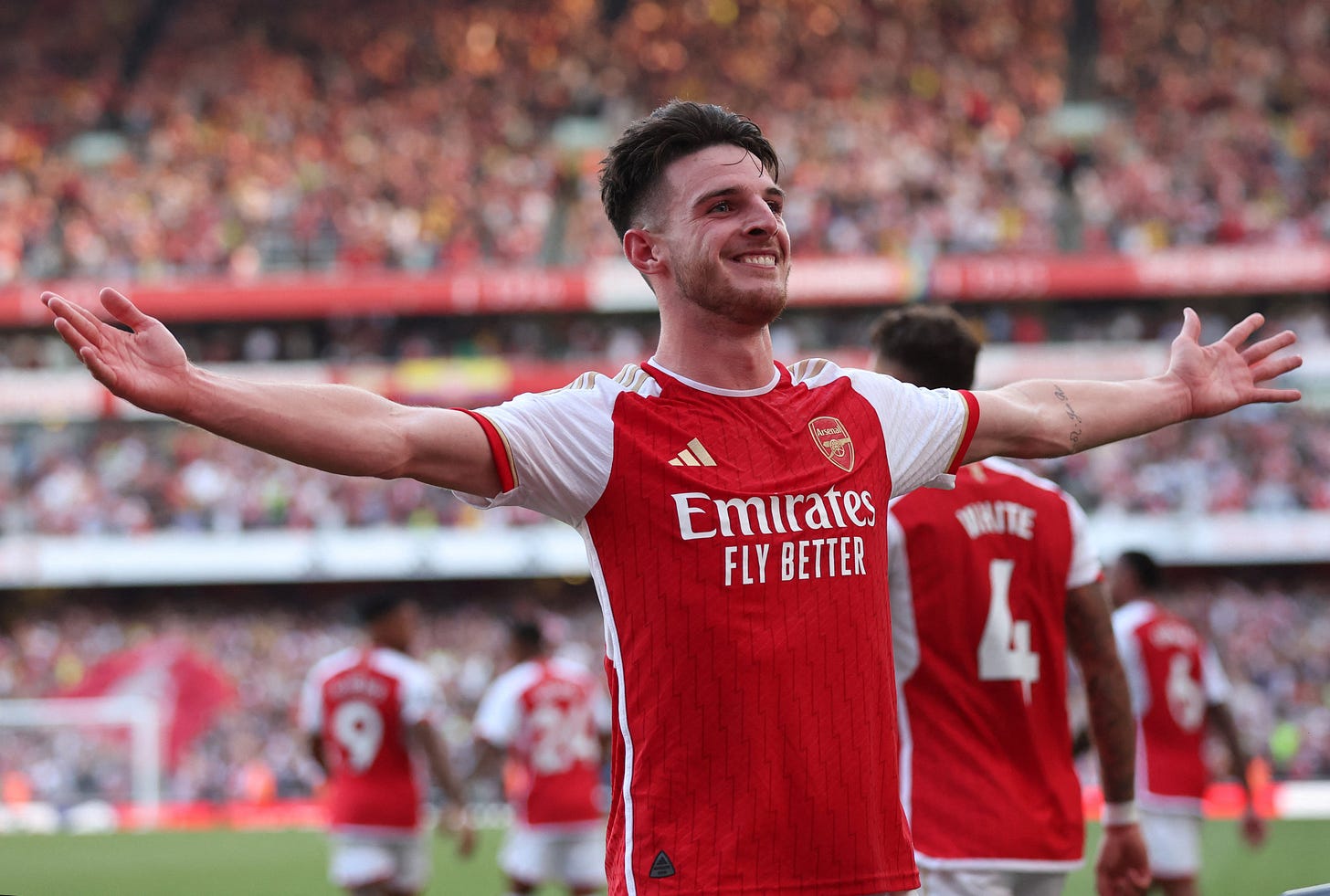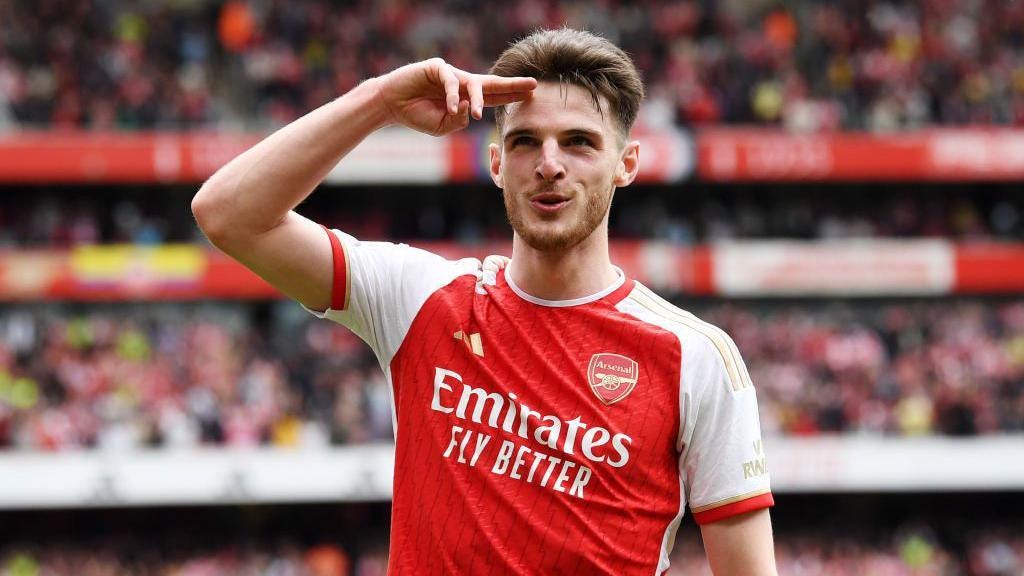Zubimendi x Rice Pivot: Was This the Plan All Along?
What looked like midfield overload might’ve actually been the blueprint for control.
When Arsenal were linked to Martín Zubimendi in the same summer they signed Declan Rice, it raised eyebrows. Why would you buy two defensive midfielders in their prime? But looking at how Arsenal are trying to control games, it’s starting to make more sense.
Rice Is Not Just a Six
Rice has been elite in the holding role but it’s becoming clear he’s even more dangerous when allowed to roam. His carries, box entries, and ability to win second balls high up the pitch are game-changing. To unlock that version, someone else needs to hold behind him.
Zubimendi Is the Enabler
Zubimendi isn’t flashy but he’s ridiculously tidy. He scans, moves into space, and keeps the ball ticking under pressure. He’s not a destroyer or a deep-lying playmaker. He’s a stabiliser. And that’s exactly what Rice needs next to him in high-stakes games.
Why the Double Pivot Changes Everything
The idea of adding Martín Zubimendi to Arsenal isn’t solely about adding squad depth, but rather about unlocking tactical flexibility and elevating control in different game states.
When you look at Zubimendi’s heatmap for Spain, you see a player who operates consistently in deep zones, offering structure, support, and calm in possession. He doesn’t drift unnecessarily. He’s a reference point in buildup, always available to receive, recycle, or break a line.
Compare that to Declan Rice’s heatmap for Arsenal, and you get a complementary picture. Rice’s activity is broader, more aggressive. He covers both flanks, presses high, and often arrives in the final third to support attacks. His mobility and physicality are elite, but they’re most effective when he’s freed from always having to start moves himself.
This is where the double pivot comes in. Against deep blocks, Rice can push on, arriving late into the box or breaking lines with vertical carries. Against high-pressing sides, Zubimendi can stay deeper, absorb pressure, and give Rice license to operate higher or wider depending on the build-up structure. They don’t need rigid roles. They can rotate depending on the opposition or the phase of play.
What Arsenal lacked at times last season was this fluid control, the ability to dictate tempo through midfield instead of playing around it. With Rice and Jorginho, there was stability but not as much dynamism. With Rice and Partey, there was athleticism but less positional discipline. A Rice-Zubimendi pairing gives you both. They’re not just bodies in midfield, they’re organisers, press-breakers, and momentum-setters.
This isn’t just about replacing players. It’s about evolving the way Arsenal impose themselves across different games. The double pivot isn’t a fallback; it’s a weapon.
Replacing Partey and Jorginho in One Move
For all the progress Arsenal made in seasons gone by, there were stretches, especially in the last season, where the midfield felt a little flat. Solid, yes. Safe, definitely.
But the Rice-Partey pivot was built more to protect than to provoke. It helped us control games, but too often at the cost of tempo and penetration. We were getting results, albiet far too many draws, and football wasn’t exactly emptying the opposition like in 23/24, when we played predominantly with the Rice-Jorginho pivot. It was emptying parts of the Emirates. Conversely, although we saw a much better Arsenal with the Rice-Jorginho pivot, we were out of ideas and quite vulnerable when playing against mid-block teams due to Jorginho’s declining physicality.
Now, imagine replacing both Partey’s dynamism and Jorginho’s press resistance with one player. That’s the logic behind targeting Martín Zubimendi.
Look at his radar. His numbers in aerials, interceptions, and recoveries are sharp. He isn’t flashy defensively, but he’s positionally sound and knows when to step in. That’s what you want next to Rice. Someone who can let him be proactive without always being the last man back. His passing and carry metrics aren’t elite, but they’re good enough, and they come with far more movement and vertical intent than Jorginho’s slower, sideways recycling.
Now compare that to Rice’s own radar, and you start to see the fit. Rice was among the best in Europe last season at ball progression and chance creation from midfield. He ranked in the 90th percentile or better for nearly every attacking metric: carries into the penalty area, assists, xG buildup, even crosses. These are not the numbers of a holding midfielder, they’re the output of a final-third disruptor.
But here’s the thing. He could only do that when given permission. And the only times he really got that freedom were either in games Arsenal already controlled, or when Jorginho could anchor and keep the ball moving at a walking pace.
Zubimendi changes that. He gives Rice the platform to go. But he also gives Arsenal flexibility. Against deep blocks, Rice can push forward while Zubimendi sits. Against high pressures, Zubimendi can drop in and help escape pressure, letting Rice drift wide or high. It’s not about one fixed role. It’s about adapting to the game state, and finally being able to do it without having to change personnel.
Partey, when fit, could do parts of this job. But those moments are increasingly rare. Jorginho can still dictate, but he lacks the legs for transition football at the highest level. Zubimendi is not just a middle-ground option; he’s the upgrade. A player who does 70 percent of both roles with more dynamism, more range, and more long-term value.
Arteta Knew?
The scouting, the timing, the fit. It all suggests Arsenal’s interest in Zubimendi wasn’t random. It was part of a longer-term vision to make Rice the true all-action eight.
Thanks for reading,
Steve












Love the simplicity of this. Always asked myself how would this work together with Rice. Great piece 👏